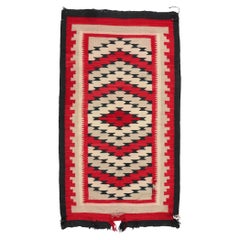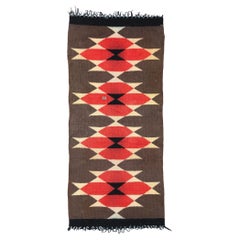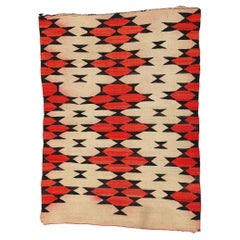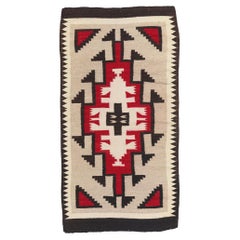Antique Navajo Rugs Arizona And Santa Fe
Early 20th Century American Navajo North and South American Rugs
Wool
Early 20th Century American Navajo North and South American Rugs
Wool
Early 20th Century American Navajo North and South American Rugs
Wool
Early 20th Century American Native American North and South American Rugs
Wool
Recent Sales
Early 20th Century American Navajo North and South American Rugs
Wool
People Also Browsed
Mid-20th Century American Navajo North and South American Rugs
Wool
Early 20th Century American Mid-Century Modern North and South American ...
Wool
Mid-20th Century American Navajo North and South American Rugs
Wool
Antique Late 19th Century American Navajo Rugs
Wool
Early 20th Century American Navajo North and South American Rugs
Wool
Late 20th Century American Navajo North and South American Rugs
Wool
Mid-20th Century American Navajo North and South American Rugs
Wool
Early 20th Century American Navajo North and South American Rugs
Wool
20th Century American Native American Rugs
Wool
Early 20th Century American Navajo North and South American Rugs
Wool
Mid-20th Century American Navajo North and South American Rugs
Wool
Antique 1880s American Native American Indian Rugs
Wool
Early 20th Century American Navajo North and South American Rugs
Wool
Early 20th Century American Folk Art North and South American Rugs
Wool
Mid-20th Century American Folk Art Turkish Rugs
Wool
Vintage 1940s Persian Navajo North and South American Rugs
Wool
A Close Look at Native-american Furniture
Native American broadly describes any Indigenous people in North America and encompasses hundreds of tribes and groups, all with distinct cultures. Native American–style furniture and decor likewise varies widely, from pieces created by Indigenous people to those appropriated by non-native designers.
Indigenous furniture’s rich heritage includes the bentwood boxes of the Northwest Coast carved from cedar for storing household or ceremonial objects. Generations of Native American people have made baskets for holding household items, with those in the Northeast using sweetgrass and those in the Southeast using pine needles and wicker. Artisans in the Plateau region wove watertight pieces like cradles from plant materials. Although these objects were intricately made, they were usually utilitarian rather than decorative.
The colonization of North America and the removal of Indigenous people from their lands led to the suppression of these practices. Many styles that used Native American motifs — such as Southwestern style, which was heavily influenced by the geometric patterns of Navajo textiles — have historically not involved Indigenous creators and, instead, have taken their traditions without their tribal context.
When decorating a home with Native American–style furniture, it is important to do so respectfully, by understanding the origins of motifs and objects and examining who profits from their sale. There are now Indigenous-led companies, such as Cherokee designer Cray Bauxmont-Flynn’s Amatoya and Totem House Design, promoting Indigenous work in furniture and home decor. Supporting Indigenous artists and artisans is essential to confronting the still pervasive issue of cultural appropriation in design.
Find a collection of Native American living room furniture, folk art, rugs and carpets, decorative objects and other items on 1stDibs.
Finding the Right Area-rugs-carpets for You
Antique, new and vintage area rugs and carpets are a simple way to add warmth and style to any space. Area rugs can be seasonal or changed with other decorative objects to refresh an interior. Carpet piles materials can vary from wool and cotton to silk and synthetic fibers, and the purpose of a floor covering can range from reducing noise to offering a place to sit.
Vintage rugs can ground a space, and arranging furniture around them creates a measured focal point. Key furniture pieces can be placed on the rug or just the legs, such as with furniture like coffee tables in your living room.
So, how can you tell if a rug is high quality or vintage?
The three main components that determine the quality of a piece are the dyes, the wool and the number of knots per square inch. Ultimately, however, if you want to be sure the rug you’re buying is truly an antique, it is best to consult an expert.
If you want a creative design that stands out, area rugs or carpets can provide layers of color. Rugs and carpets reflect a global heritage of textiles and weaving, such as ornately patterned Persian and Indian designs. Visually striking Chinese rugs can add a delicate touch of color, while modern rugs make a statement with their geometric patterns.
Turkish rugs, with their ruby reds and misted blues, their entwined botanical designs and rhythmic geometries, are as beloved today as they were in the 13th century. The West’s current infatuation with Moroccan and North African tribal rugs stretches to the mid-20th century, when modern furniture designers embraced bold geometric patterns and even bolder palettes as counterpoints to form-follows-function interiors. Alvar Aalto, Frank Lloyd Wright and Le Corbusier were among the designers who used these rustic, natural rugs to offset austere interiors.
If you properly maintain your antique and vintage rugs, they will last for many years. When you’re thinking about how to clean a rug, it is important to keep in mind that your vacuum is not too harsh for your favorite floor covering. Frequent vacuuming is in fact necessary to remove everyday dirt that otherwise wears down the pile. Omri Schwartz of Nazmiyal does, however, stipulate that “it’s best to use an ordinary suction vacuum without bristles, as the bristles can damage the rug’s pile.” Rotating the carpet every couple of years is also recommended — it ensures that the rug gets even foot traffic.
On 1stDibs, find a vintage rug or carpet to add a layer of beauty and function to your room.
- 1stDibs ExpertFebruary 22, 2021Navajo rugs are so expensive due to their exemplary craftsmanship and use of high quality wool. The tightness of the weaving, size of the rug, dyes used and condition all affect a Navajo rug's price. Prices for Navajo rugs typically range anywhere from $100 to a few thousand dollars. Find Navajo rugs and carpets now on 1stDibs.




